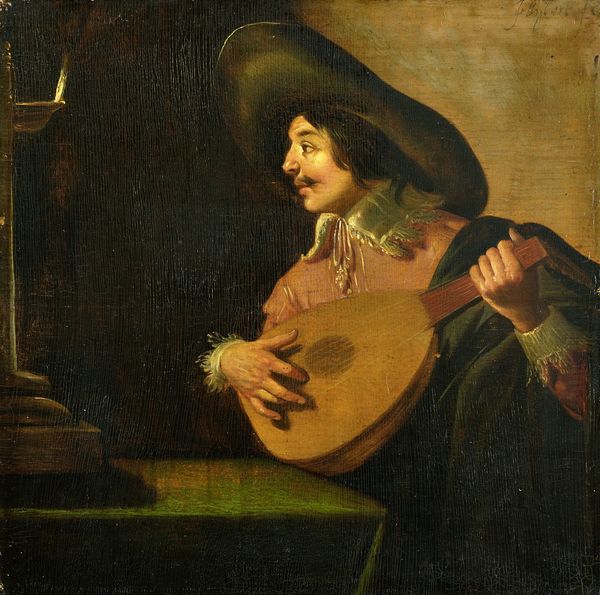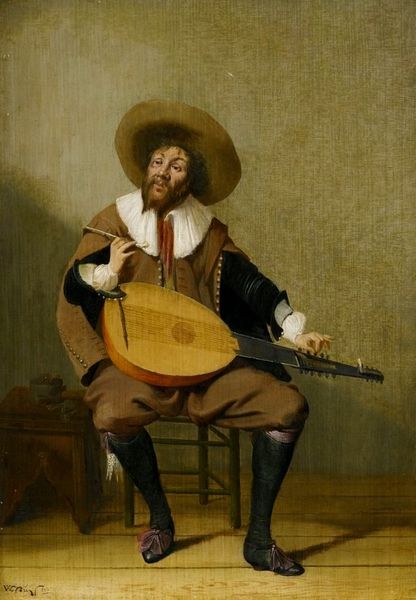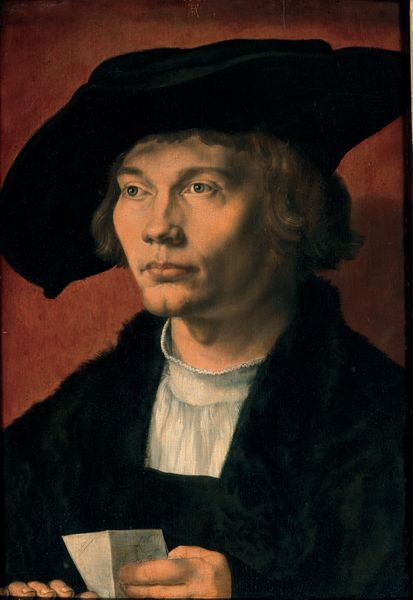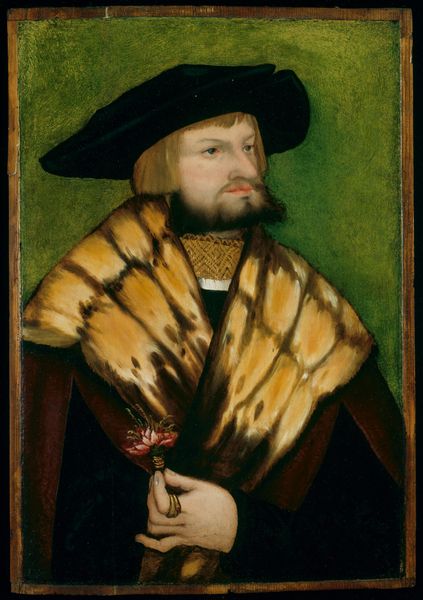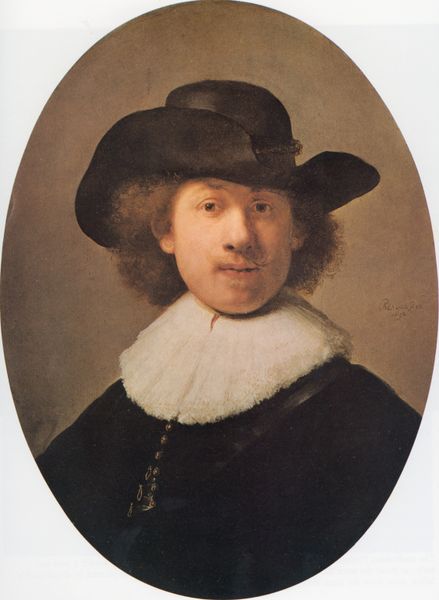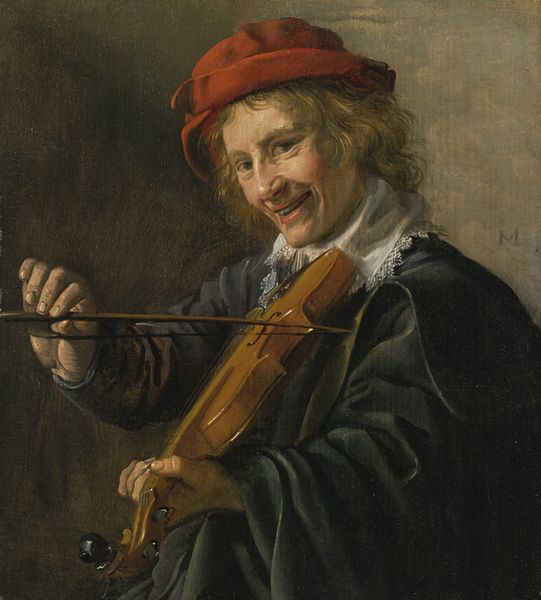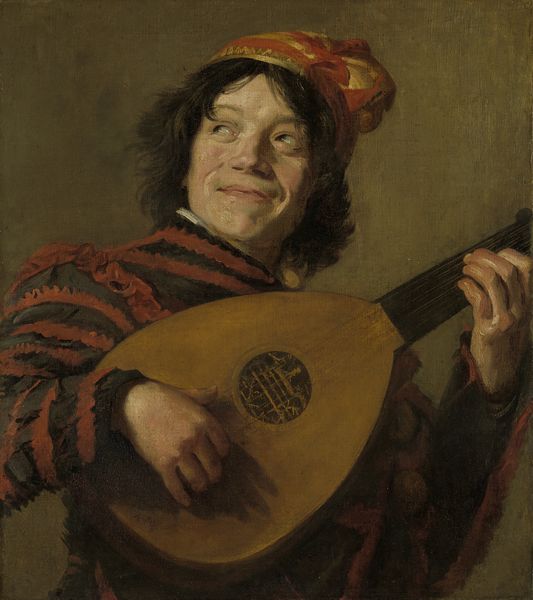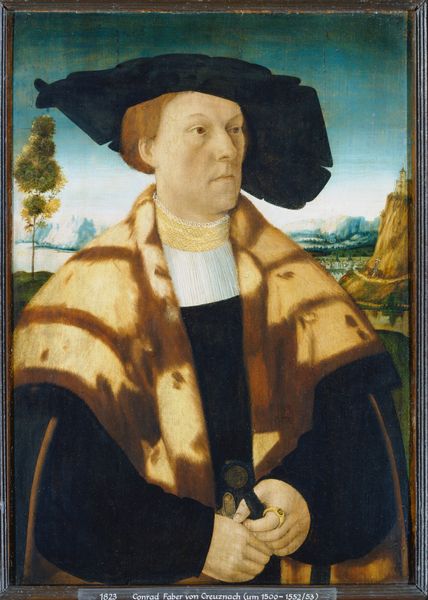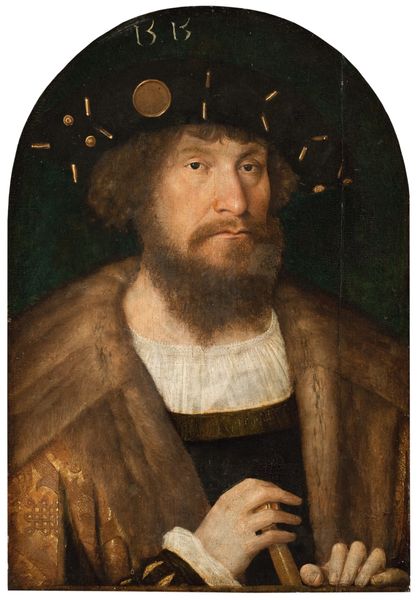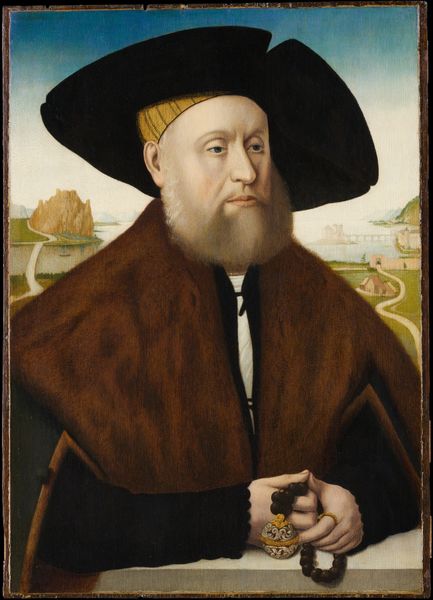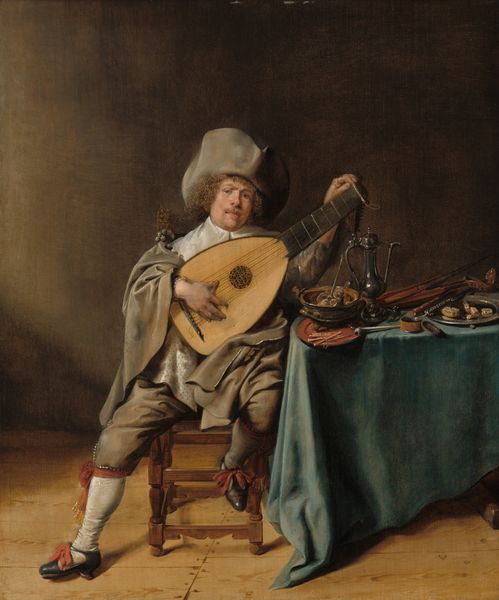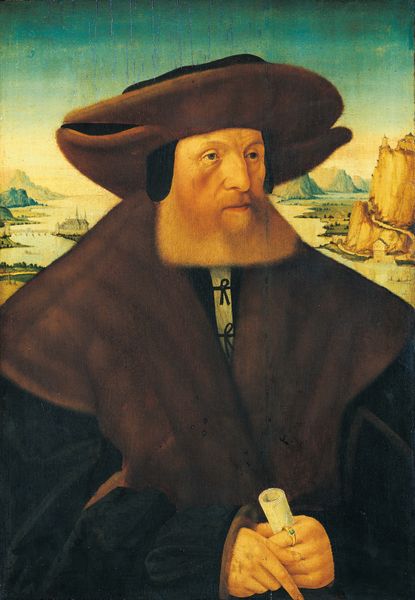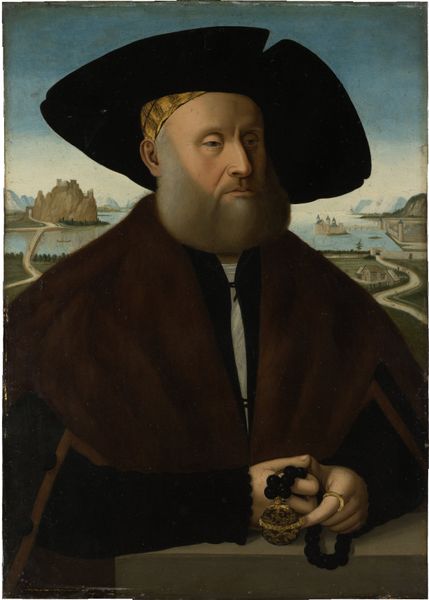
painting, oil-paint
#
portrait
#
painting
#
oil-paint
#
11_renaissance
#
oil painting
#
genre-painting
#
northern-renaissance
#
portrait art
Dimensions: 44 cm (height) x 32.5 cm (width) (Netto)
Curator: This is Jan van Scorel's "Portrait of a Lute Player," thought to have been completed sometime between 1510 and 1562. Editor: It's striking. The somber color palette, primarily blacks and muted tones, creates a pensive mood. The sharp lines defining his face and the instrument make a visually interesting contrast. Curator: Absolutely. Scorel's mastery lies in the juxtaposition of textures. Notice the smooth, almost porcelain-like finish of the face versus the rougher rendering of the lute and the heavy folds of his garments. It draws the eye precisely where he intends. Editor: From a historical viewpoint, this work offers insights into the social status associated with musical instruments. The lute player likely belonged to a certain cultivated milieu, didn’t he? Curator: Precisely! The lute was a symbol of refinement, intellect, and artistic appreciation. His direct gaze challenges the viewer, almost asserting his place in society. Consider the role of costume here, the way the dark clothing emphasizes sobriety, framing his face like a painting within a painting. Editor: This somber style perhaps alludes to broader political contexts of the 16th century. Do you believe the austerity reflected in the painting might signify wider societal constraints or artistic regulations prevalent at the time? Curator: It could certainly indicate a response to those social pressures, or maybe a way to fit certain codes of conduct and presentation, while the mastery of composition still elevates his individuality. I am drawn to the intentional blurring in the sky, creating a dreamy and uncertain aura around his strong figure. Editor: That said, there is something genuinely dignified in this depiction, maybe reflecting humanist ideals circulating amongst elites at that time, or maybe more specific issues that affected that community that could justify the need for some specific poses to create a sense of collective visual communication. Curator: Looking at the sum of the composition—form, subject, light, shadows—I can observe a careful construction of the portrait. It has structure. Editor: It makes one wonder how accurate a likeness it really is, or how much is an artful exercise in constructing an ideal identity, carefully poised for posterity.
Comments
No comments
Be the first to comment and join the conversation on the ultimate creative platform.
